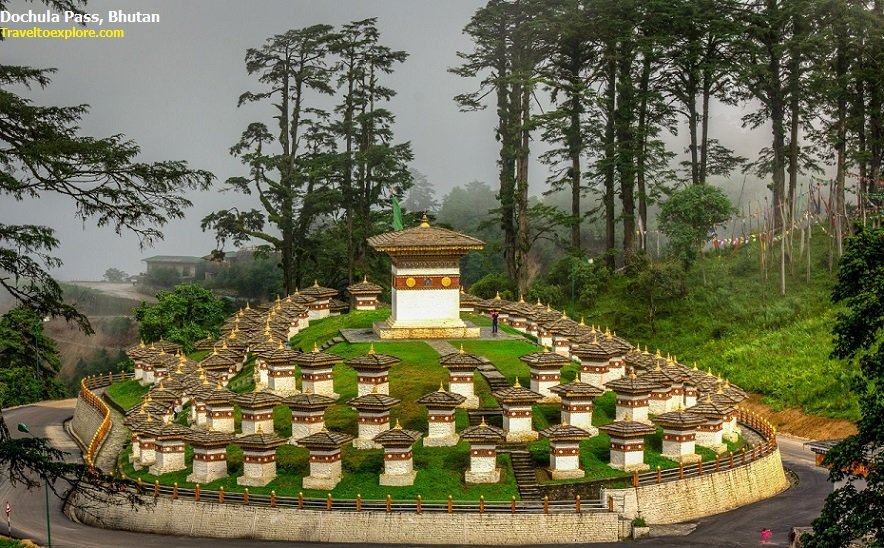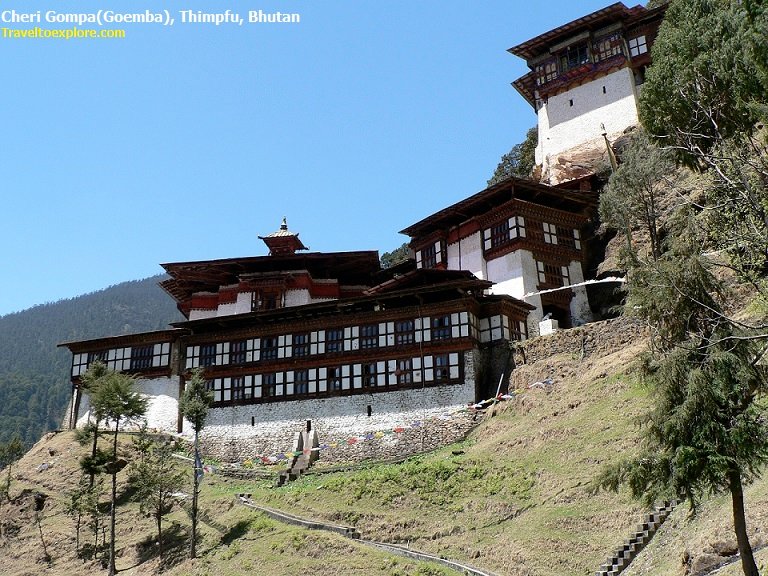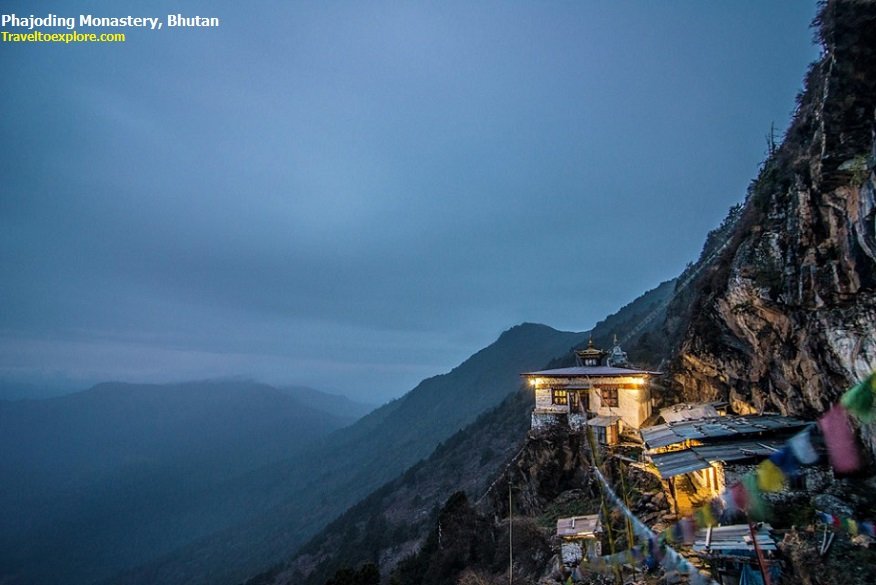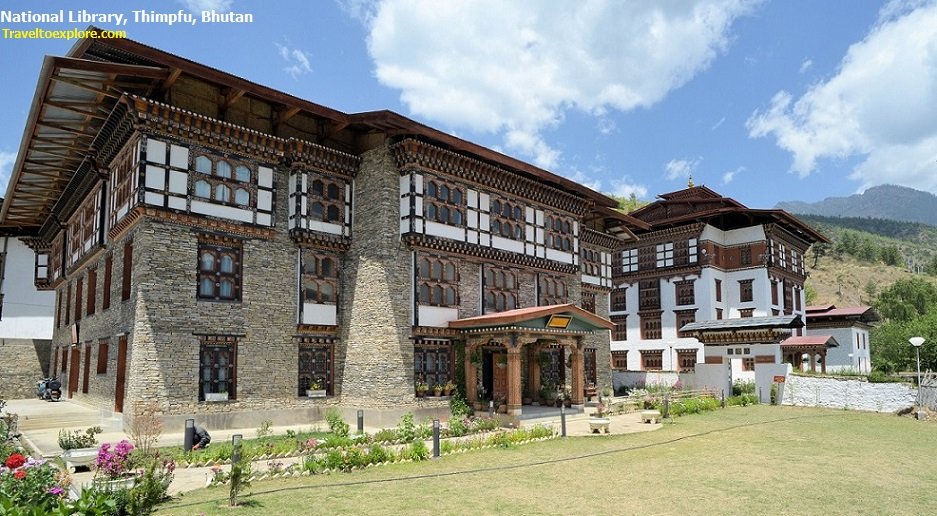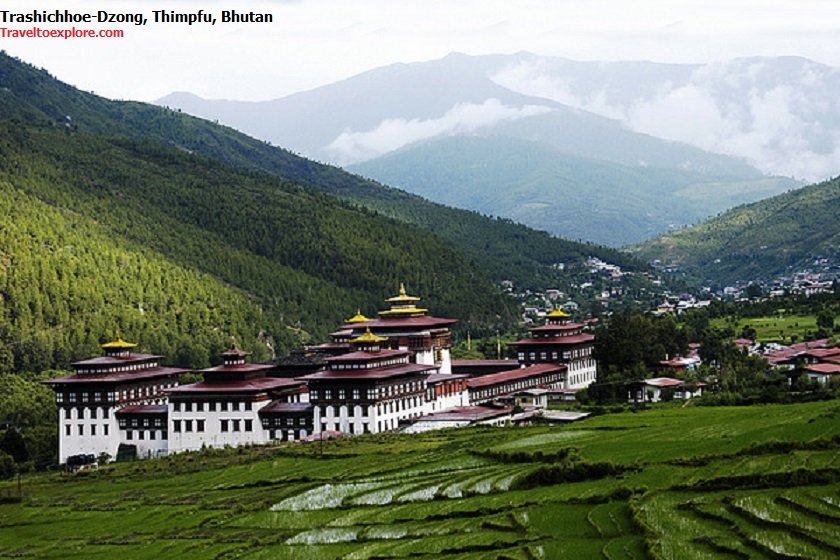Thimpfu
Highlights
Thimphu is the most modern city in Bhutan with an abundance of restaurants, internet cafes, nightclubs and shopping centres’, however it still retains its’ cultural identity and values amidst the signs of modernization.Thimphu is one of the few towns in Bhutan that have been equipped with ATM banking facilities and is a good place to stock up on some currency.
One of the most curious features of Thimphu is that it is the only capital city in the world that does not use traffic lights. Instead a few major intersections have policemen standing in elaborately decorated booths (small pavilions), directing traffic with exaggerated hand motions. The juxtaposition of ancient tradition and modernity make Thimphu the ideal location for visitors to break away from their tour itinerary and just immerse themselves in the lifestyle of contemporary Bhutanese.
What To See
Tashicho Dzong
The dzong is located close to Thimphu town, next to the banks of the Wangchhu River. It is an impressively large structure, surrounded by well-kept lawns and beautiful gardens.
Also know as "fortress of the glorious religion", it was initially built in 1641 and later rebuilt in its present form by King Jigme Dorji Wangchuk in 1965. The Dzong houses, main secretariat building which houses the throne room of His Majesty, the King of Bhutan. The National Assembly Hall is housed in a modern building on the other side of the river from the Dzong. During the warmer summer months, the monk body headed by His Holiness, the Je Khenpo, makes its home in the Dzong.
National Memorial Chorten
Chorten literally means ‘Seat of Faith’ and Buddhists often call such monuments, the ‘Mind of Buddha’. The chorten is an extraordinary example of Buddhist architecture and art work with its gorgeous paintings and intricate sculptures.
The chorten is a large white structure crowned with a golden spire. It is located close to the center of Thimphu city and is one of its most iconic monuments.
Buddha Dordenma Statue
This massive statue of Shakyamuni measures in at a height of 51.5 meters, making it one of the largest statues of Buddha in the world. The statue is made of bronze and is gilded in gold. 125,000 smaller Buddha statues have been placed within the Buddha Dordenma statue, 100,000 8 inch tall and 25,000 12 inch tall statues respectively. Each of these thousands of Buddhas have also been cast in bronze and gilded. The throne that the Buddha Dordenma sits upon is a large meditation hall.
The Buddha Dordenma is located atop a hill in Kuenselphodrang Nature Park and overlooks the Southern entrance to Thimphu Valley. The statue fulfills an ancient prophecy dating back to the 8th century A.D that was discovered by Terton Pema Lingpa (Religious Treasure Discoverer) and is said to emanate an aura of peace and happiness to the entire world.
Folk Heritage Museum
Located in the capital city of Thimphu, this museum was established in 2001 and provides visitors and tourists with fascinating insights into the Bhutanese material culture and way of life. The Folk Heritage Museum is set inside a three storied, 19th century traditional house. The museum gives you a glimpse of the traditional Bhutanese lifestyle, in addition to artifacts from rural households; it also displays an impressive collection of typical household objects, tools and equipment. The museum also organizes regular demonstrations of rural traditions, skills, habits and customs as well as hosting educational programs for children.
The museum is closed on government holidays. Hours of operation are from 10:00 am to 4:30 pm from Monday to Friday, from 10:30 am to 1:00 pm on Saturdays and 11:30 am to 3:30 pm on Sundays.
Simtokha Dzong
This dzong, built in 1627 by Shabdrung Ngawang Namgyal, stands on a low ridge 8 km down the valley from Thimphu. The Institute for Language and Cultural Studies is located here. The most noteworthy artistic feature of this dzong is the series of over 300 finely worked slate carvings behind the prayer wheels in the courtyard.
National Library
The history of Bhutan lies imprinted in archaic texts, which are preserved at the National Library. Besides thousands of manuscripts and ancient texts, the library also has modern academic books and printing blocks for prayer flags.
Institute for Zorig Chusum
Commonly known as Arts & Crafts School or Painting School, the Institute offers a six-year course on the 13 traditional arts and crafts of Bhutan. On a visit, one can see students learning the various skills taught at the school.
Traditional Medicine Institute
In Bhutan, equal emphasis is given to both allopathic and traditional medicines. The rich herbal medicines made up from medicinal plants abundant in the Kingdom are prepared and dispensed here. The Institute is also a training school for traditional medicine practitioners. The complex is closed to visitors due to considerations of hygiene, but one can still walk around and view it from outside.
Changangkha Lhakhang
It is a fortress like temple and monastic school perched on a ridge above Thimphu, south of Motithang. The temple was established in 12th century on a site chosen by Lama Phajo Drugom Shigpo, who came from Tibet. The central statue here is Chenrezig in a manifestation with 11 heads. From temple courtyard, there is fascinating view of Thimphu valley.
Drubthob Goema / Zilukha Nunnery
Perched on a promontory, overlooking picturesque Trashichhoedzong and Golf course, it is the only nunnery in capital known as Zilukha Anim Dratsang, once belonged to the Drubthob (Realized one) Thang Thong Gyalpo often referred to as The King of the open field (In the early 15th century with his multiple talents he popularly became the Leonardo da Vinci of the Great Himalayas). You may interact here with some of the nuns who have devoted their life to spirituality and Buddhism.
Places Around Thimphu
Tango Gompa
This monastery was founded by Lama Gyalwa Lhanangpa in the 12th century and the present building was built in the 15th century by the "Divine Madman", Lama Drukpa Kunley. In 1616 Shabdrung Ngawang Namgyal visited Tango and meditated in a cave near the monastery. His meditation helped ensure the defeat of an invading Tibetan army. The head Lama, a descendent of Lama Drukpa Kunley presented the goemba to Shabdrung, who carved a sandalwood statue of Chenrezig which he installed in the monastery. The picturesque three-storey tower and several surrounding buildings were built in the 18th century by the eighth Desi, Druk Rabgye and Shabdrung Jigme Chhogyel added the golden roof in the 19th century.
Situated north of Thimphu, one way it takes about 30 minutes drive and one hour walk through shaded rhododendron forests to reach the monastery.
Cheri Gompa
This monastery was built by Shabdrung Ngawang Namgyal in 1620. A silver chorten inside the monastery holds the ashes of Shabdrung's father. The goemba is situated about half an hour walk from Dodena (alt. 2,600m).
The trail commences by crossing a traditional wooden bridge that spans the Thimphu Chhu, then climbs steeply to the monastery. Being the place where the Shabdrung spent many years in meditation, Cheri today has numerous hermitages and small temples located on its slopes, commanding spectacular views. The one way walk to the monastery is approx 4.5 km, taking about 2 hours.
Phajoding Gompa
t is a 5 km uphill walk from Motithang. The monastery was built in 15th century by Shagcha Rinchen who introduced the Drukpa Kagyupa school in Bhutan in the 13th century. It was one time one of the richest monasteries in the country.
Lungchuzekha Gompa
It is an interesting three to four hours round trip walk around Dochula pass, offering fascinating view of Bhutan Himalayas. From 108 chortens and mani wall at Dochula pass, the road ascends gradually into white, red and pink rhododendron forests for about one and a half hour with some steep sections before branching left to Lungchuzekha Goemba. The highlight of this excursion is beautiful forest, spectacular mountain views and monastery.
Takin Preserve, Motithang
The Takin is the national animal of Bhutan, and looks like a cross between a cow and a goat. Legend has it that the animal was created by the great Buddhist yogi, Drupa Kunley, and it can be found only in Bhutan and nearby areas. Taxonomists place the animal in a category of its own as it is not similar enough to any other animal to fit established categories.
Botanical Gardens, Serbithang
Located on lush hillside about 10km from the city, the gardens offer a peaceful and relaxing environment to spend a few hours. Botanists will find the wide selection of indigenous trees and plants of interest.
Coronation Park
Located on the banks of the river (near the city stadium), this 5.6 acres of parkland offer a pleasant and relaxing environment to stroll or to sit and watch the river flow by.
Tandin Nye
This sacred lhakhang is about 1 km from the main town, built on a cliff, just like the Tiger’s Nest in Paro. The visit to the temples provides an opportunity to feel and see the great work of ancient Buddhist legends. It is believed that there use to a lake below the lhakhang but now one can found only a marshy area.
How To Reach
By Road/Rail
Phuentsholing is the border town and entry point for Bhutan when you entering Bhutan from india by road. Bagdogra airport, in the state of West Bengal (India) is the nearest airport about 5 hours drive from Phuentsholing. The nearest rail head from Phuentsholing is New Jalpi Gudi Railway Station.
By Air
Paro is the international airport of Bhutan, to get to and from the country. There is an availability of regular flights between Paro and Delhi and Kolkata
Gallery
Related Package
Related Hotel
No Hotel available
Reviews
Excellent
4.6 / 5.0
90% recommend this package
Score Breakdown
- (58)
- (132)
- (89)
- (58)
- (9)
Average Rating For
- Cleanliness 4.5
- Service 4.5
- Comfort 4.2
- Condition 3.8
- Neighbourhood 4.4

